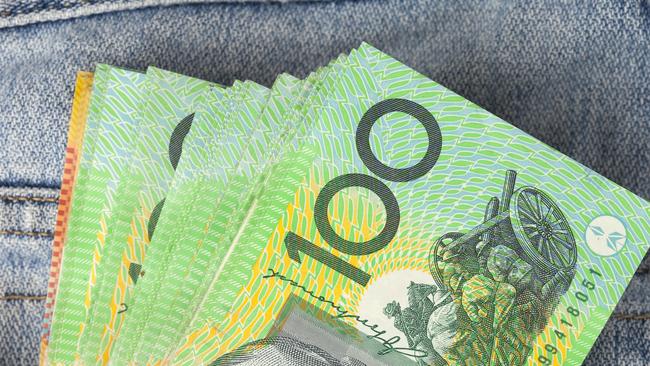
As the ASX 200 inches higher to cross the 6000 point barrier, the underlying reality is that some very severe profit slumps and GDP readings are ahead of us.
And while many are distracted by the fantastic stories of Afterpay or Tesla, investors who have serious money to manage are hoarding cash.
Hamish Douglass of Magellan, perhaps the most successful fund manager of his generation, revealed this week that he had lifted the level of cash in the Magellan Global Equities fund from 8 to 15 per cent — that is a significant jump for any manager.
Douglass says he just does not know which way the sharemarket might move in the months ahead.
But action speaks louder than words. If Magellan is lifting cash when share prices are rising then the fund is bracing for a second downturn to follow the hair-raising setback we witnessed in March, when the market fell 30 per cent.
When top fund managers look like they are moving against the grain you have to take them seriously. It’s not just positioning — in bunkering down with higher cash holdings that earn virtually nothing they risk falling behind their peers.
Roger Montgomery, who writes for The Australian, is a leading investor who has built The Montgomery Fund’s reputation on value investing.
Montgomery is famously conservative, to the point that he recently endured a downgrade from the Lonsec ratings group. But a key reason Montgomery got this tick of disapproval was “persistent high cash allocation”: he point-blank refuses to fully invest at these levels.
On the global stage, Warren Buffett is also out of fashion as he hoards cash, just as he was out of fashion in the months leading up to previous crashes in 2008 and 2000.
What are these highly regarded fund managers so worried about? Or do we even have to ask, as the wider market prices in a V-shaped recovery which is not materialising in the real economy.
As investors we invariably look to the sharemarket navigation lights but the credit market is more important to how the economy actually works, and it is not signalling green just now.
If there really was an authentic recovery gathering pace after the initial COVID-19 shocks of March then surely some rates would be moving higher, but they are doing no such thing.
The ultimate credit market navigation light, 10-year US Treasuries, are at 0.62 per cent, which is where they were in the depths of the pandemic in mid-March, and long-term interest futures remain at record lows.
Meanwhile investors continue to pour into the sharemarket because it is “the only place to get returns”.
The logic here is that interest rates are now set so low that shares are the only asset class that can create credible total returns, even if those returns are lower than they were in the past.
Similarly, the logic of the bulls is that the market won’t take a second nosedive because there is almost no chance that the key central banks — especially the US Federal Reserve — will allow rates to lift soon. But there are other reasons why the market could drop suddenly.
The most obvious is what economists call the “Minsky moment” — Hyman Minsky’s theory that markets can quite literally collapse on themselves as exuberance suddenly turns to fear.
Is there exuberance in the market just now? Can we possibly be witnessing irrational exuberance in the face of rising unemployment, dismal economic numbers and social dislocation triggered by the pandemic?
You bet we can.
Certainly the irrational exuberance is present in the loosely defined tech sector of the sharemarket where speculative activity has run rampant. On the ASX the sterling example is consumer finance company Afterpay; on Wall Street it is the electric-car maker Tesla.
Afterpay is a loss-making company that is now trading on 75 times revenue.
On Wall Street, Tesla stock has tripled in price since March and the company now has a market capitalisation of $US287bn. That’s the equivalent of, wait for it, the total value of eight times Ford and 27 times Renault combined. Oh yes, and in a year where the automobile sector is down 25 per cent, Tesla has just 0.8 per cent of global car sales.
Can there be a sharemarket crash without official rates rising? Of course. Can a single sector of the market bring the rest of the market down with it if it keels over? Yes — remember the dotcom crash of 2000.
We hear every day of the new generation of sharemarket investors who have come into the market since March, and the tripling of new applications at online share brokers.
The burst in “working hour” trading activity comes from an intelligent workforce suddenly forced to work from home. They have not been burnt before, but the circle of elite investors hoarding money in this period have been through it all many times.








After the remarkable rebound from April to June, nerves appear to be fraying across the sharemarket, with some of the smart money suddenly acting very cautiously indeed.